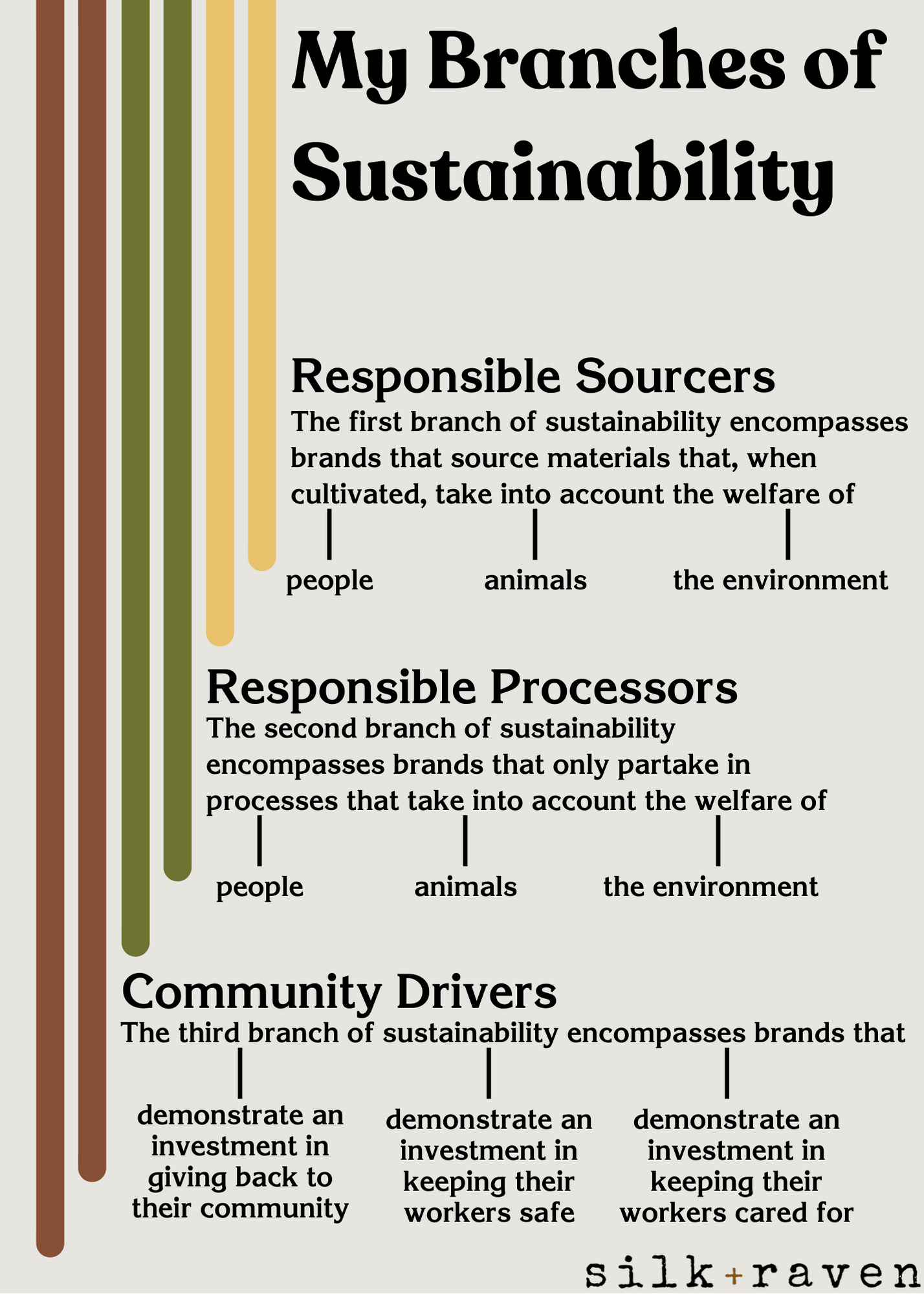The Branches of Sustainability Pt. 1

There is no denying sustainability has become a buzzword in the fashion industry. These days, almost every fashion house and clothing brand has some sort of page on their website vaguely outlining what “efforts” they have made to become “transparent” and “sustainable” in the modern world. However, for the majority of these brands, the information stops there or only tip-toes past the line leaving consumers to believe, “well - they at least mentioned the illustrious buzzword, so all must be good, right?” And unfortunately, the answer is normally no. As Linda Greer points out in Tatiana Schlossberg’s Inconspicuous Consumption, most of the sustainability pages we find are simply a PR page that boasts circularity and consciousness without doing a darn thing to help us as consumers figure out what is sustainable and what’s just another brand using an unregulated term to sound trendy.
Amidst diving into the sustainable blogging world, one of the first things I realized was that many brands treat sustainability as a sliding scale with some deeming themselves as sustainable for simply using deadstock fabrics or “recyclable” packaging. I was going to have to create a sort of outline, or more, an extenuating definition of what sustainability in fashion meant for me. Through research from (1) books like the aforementioned Inconspicuous Consumption and Paul Hawken’s Drawdown (2) manifestos and reports from fashion houses like Stella McCartney and Reformation, and (3) the standards and certifications set in place by The Global Recycle Standard, Bluesign, EU Ecolabel, Global Organic Textiles Standard, and Fair Trade Certified, I’ve come up with what I like to call My Branches of Sustainability.
These branches will (hopefully!) not only clarify, but help you to organize and prioritize the standards you seek from brands. There are three main branches: Responsible Sourcers, Responsible Processors, and Community Drivers. Each main branch has three sub-branches that further break down the section. While I would LOVE to get down to the heart of every branch and sub-branch right here, I thought I would start by breaking down The Environment sub-branch under Responsible Processors.
My second branch of sustainability encompasses brands that only partake in processes that take into account the welfare of people, animals and the environment. So let’s break down that last bit! A brand that considers the welfare of the environment during the processing stage focuses on moving us away from the use of non-renewable resources and eliminating overall harm to mother earth. Sounds hard and confusing, right? Not really! Brands that fall under this branch of sustainability are some of the most creative, in my opinion! One of my favorites is Stella McCartney’s ECONYL system.
Just a tiny bit of background on Technical Materials before we jump into the ECONYL system. Technical Materials are materials coming from non-renewable resources. They are materials made solely by humans and include nylon, polyester, plastics and metals. When they are optimally recycled they can be used many times over without any loss in quality. ECONYL uses technology that turns nylon waste, a Technical Material, into nylon yarn that is the exact same quality as virgin nylon. And that’s not even the best part. The best part is that this process can be done infinitely, making it a truly circular material. HOW INSANE IS THAT?
There are countless other examples of creative processes done by brands for the betterment of our environment, and I would love to hear the creatively sustainable processes your favorite brands are partaking in. Diving into a sustainable lifestyle can seem daunting, confusing and (to be honest) expensive with little help coming from a majority of fashion houses. Always remember, every little bit helps and every step you make is one of progress! Congratulate yourself, you’ve made it to a sustainability blog at the very least!

